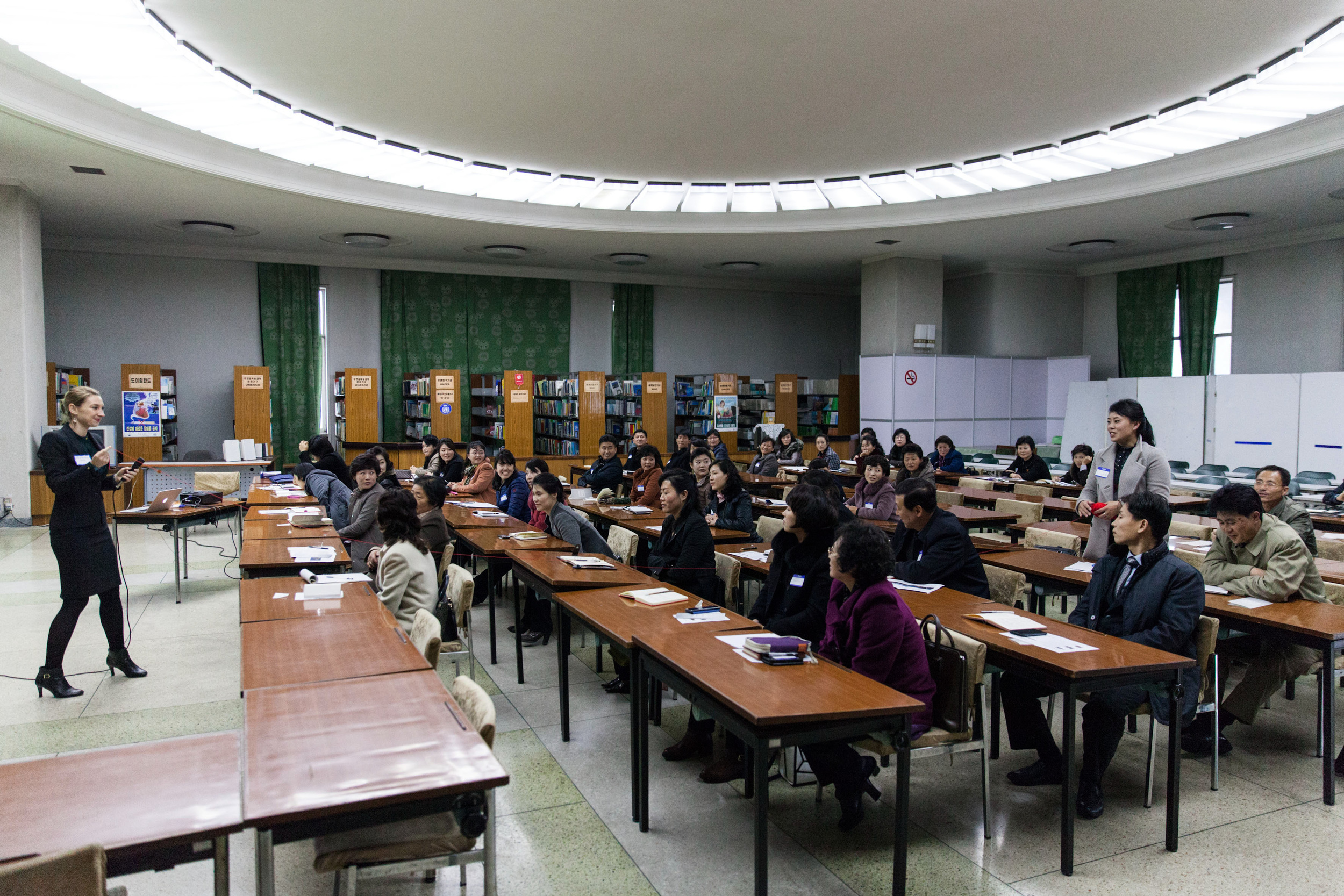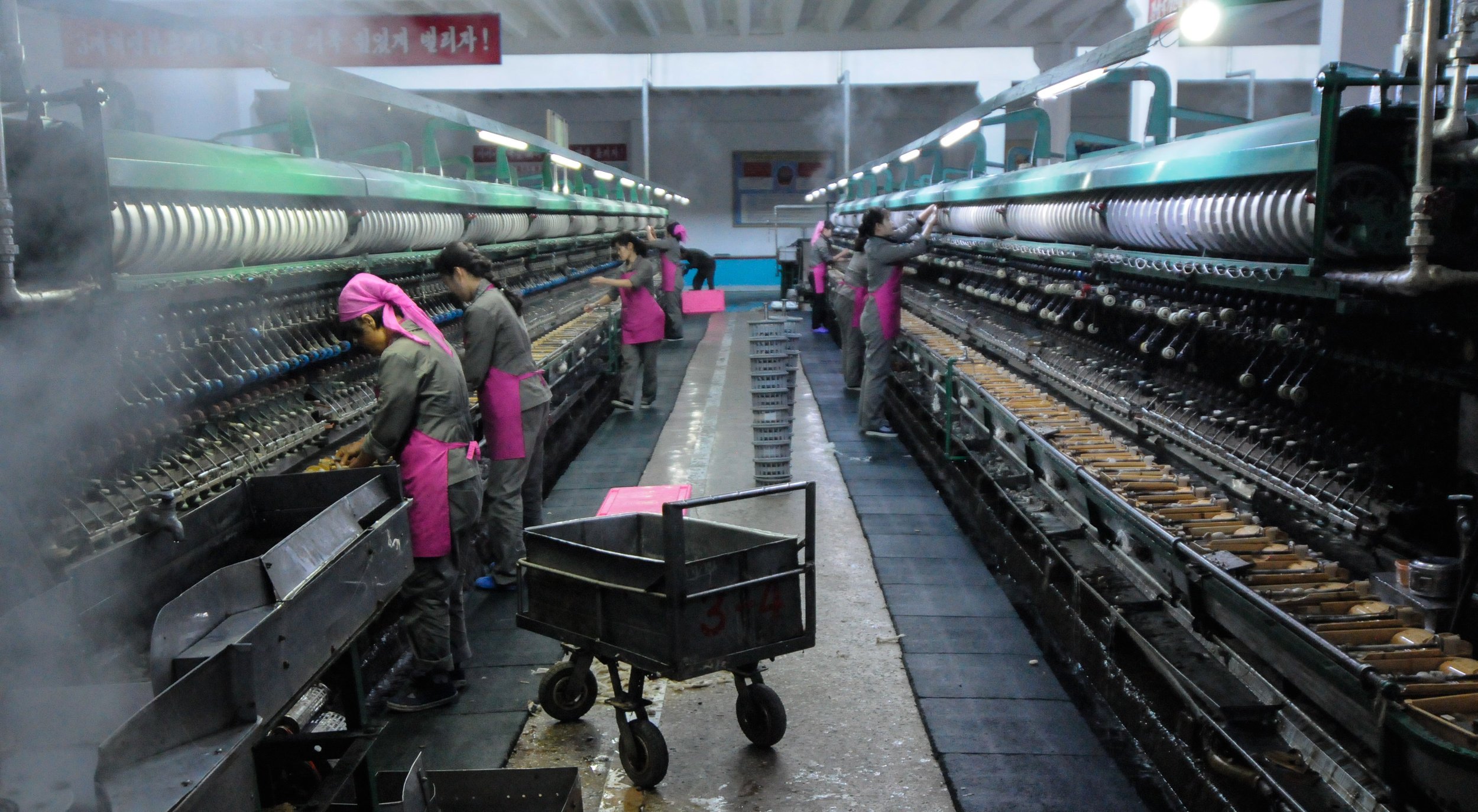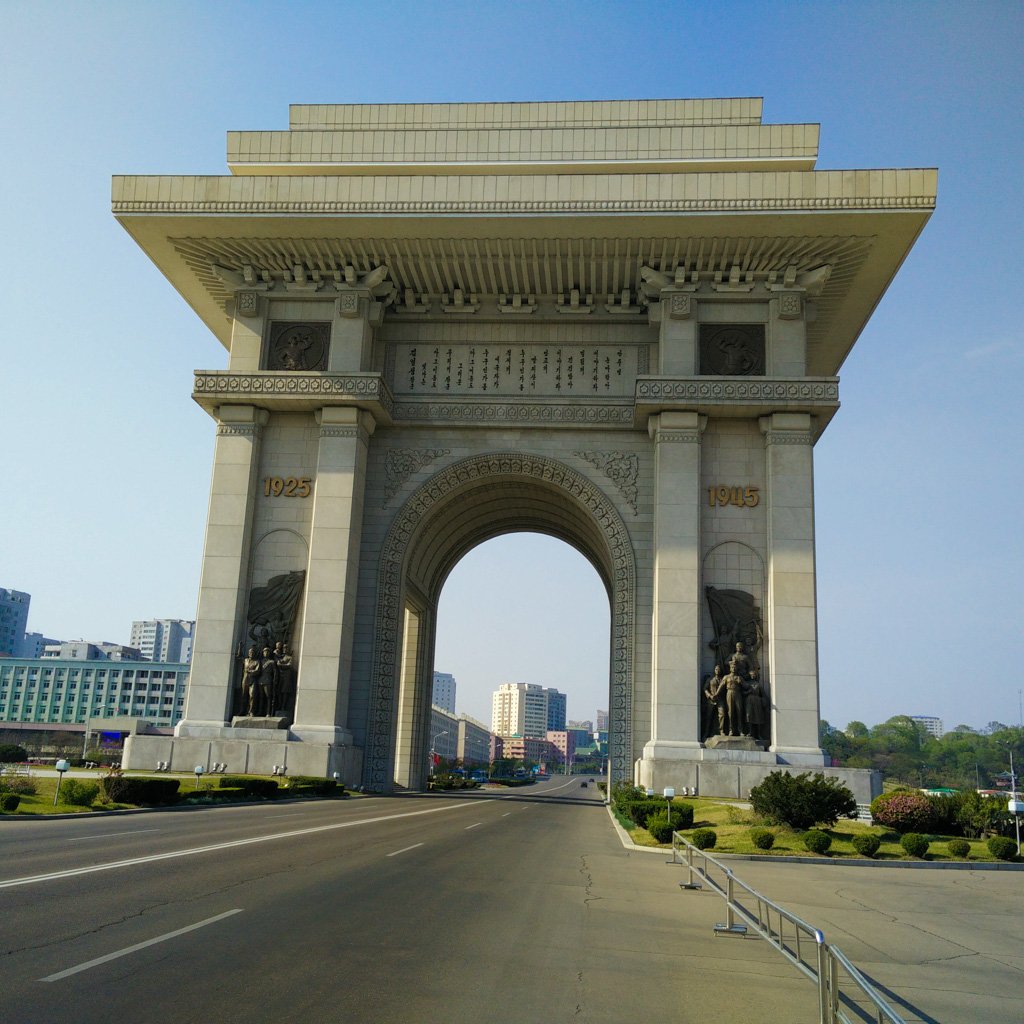In-country Engagement
From 2010 to 2019, the backbone of our work inside North Korea was running workshops for startup entrepreneurs and small to medium sized businesses. We brought experts from around the world to North Korea to share their expertise in multi-day workshops in Pyongyang, Pyongsong and other cities around the country. These workshop leaders were drawn from a diverse range of backgrounds- everything from senior managers at blue chip companies to successful entrepreneurs who have built million-dollar businesses from scratch, as well as academics, architects, city planners, and so on.
Each person we select for the programmes brings a unique set of skills and life experiences; they teach practical advice about what does and doesn’t work in the wider business world. As with any education, real world experience is tremendously valuable to build on the pure theory that students read in text books. This was reflected in the popularity of the programs- from humble beginnings when we were just starting out, by 2019 we were regularly seeing between 100-150 attendees at our workshops.
In early 2020 as the COVID pandemic spread around the world North Korea became the first country to close its border. With no travel possible, this put our in-country program on pause. Throughout this time we maintained regular contact with our in-country partners and pivoted to Online Education. As regulations relax, we are monitoring the situation and will update when in-country programming begins again.
In-country initiatives
Prior to COVID, we operated several long-term initiatives in-country focusing on different areas of opportunity in the North Korean environment. These activities ranged from focusing on the role of women and their networks in small businesses in our Women in Business (WIB) program, developing tourism in the Kangwon Special Economic Zone, and taking young Koreans out of the DPRK for overseas exchanges.
WOMEN IN BUSINESS
Our WIB program supports leading female managers and entrepreneurs with business skills training, helping talented participants to set-up or grow their business.
PROVINCIAL DEVELOPMENT
With our PDP program, we support regional development by training officials, researchers, and policymakers from the provinces who are focusing on Special Economic Zones.
YOUNG ENTREPRENEURS NETWORK
Our YEN program encourages entrepreneurship through foreign exchanges that nurture a local ecosystem for small business growth in the DPRK.
As the border begins to reopen, we look forward to revitalising and continuing these in-country initiatives alongside our regular online education programmes.
GET INVOLVED
We are currently sourcing interest for upcoming workshop trips to North Korea as the border relaxes.
If you are interested in learning more about how you can help support entrepreneurship in North Korea through lending your expertise to an in-country workshop, please contact Ian@chosonexchange.org
Trip Highlights
North Korea is unique in many ways — not just in its political system and ideological determination, but also in the striking atmosphere that permeates its centrally planned capital of Pyongyang and the much less developed countryside. While the primary reason we travel to the DPRK is to support the emerging business community and its budding entrepreneurs, Choson Exchange programs are also an opportunity to get a rare impression of the country while interacting with locals in ways that are impossible for tourists. Here are some of the highlights that volunteers get to experience when travelling to North Korea with Choson Exchange.
The Sci-Tech Complex
The Sci-Tech Complex is a new development on an island down the river from Pyongyang, and, like Mirae Scientists Street, a symbol of North Korea’s strident ambitions. Shaped like an atom when viewed from above, it has floors and floors of interactive science fun for visiting school children (and curious Choson Exchange volunteers), but also boasts a comprehensive e-library for scientific works. Oh, and it’s got an enormous faux rocket as the centrepiece in the library. Of course it has.
Kim Il Sung Square
When thousands of North Koreans march against “U.S. imperialism” or dance in unison for their leaders, they often do it on Kim Il Sung Square. The largest in the city, and one of the biggest public squares in the world, it is less than a kilometer from the hotel we usually stay- and right in front of the Grand People’s Study Hall where Choson Exchange volunteers give their workshops. We often walk across the square during lunch breaks on our way to a local coffee shop, and drop in on a nearby bookstore selling foreign language publications. Kim Il Sung Square is also a great place to watch Korean kids on roller skates or fool around while waiting to visit one of the nearby museums during school outings.
Kim Jong Suk Silk Mill
Named in honour of Kim Jong Suk, President Kim Il Sung’s wife and grandmother to the incumbent leader Kim Jong Un, a visit to the Silk Mill is an unforgettable experience: row after row of enormous machines relentlessly churn out silk, while the (entirely female) staff toil away under motivational banners to reach their production targets. The combination of steaming hot water baths, the cacophony of noises from the machinery, and an unmistakable smell of silkworm cocoons can be quite overpowering. Like many model North Korean institutions, the silk mill has its own campus with schooling, leisure facilities, and accommodation for the staff who live and work there.
Tower of Juche Idea
Juche is a Korean concept that was developed into an entire ideology by the DPRK’s founder and the present leader’s grandfather Kim Il Sung. The term roughly translates to ‘self-reliance’, and the ideology emphasizes to the ability of man to master his own environment. Built on the occasion of President Kim Il Sung’s 70th birthday, and containing one block for every day of his life, this is the tallest stone tower in the world. Take a ride in the elevator up to the top floor of the tower just under the enormous eternal flickering red torch to take in an unrivalled open air view over the city and beyond!
Mirae Scientists Street
Mirae (Future) Scientists street is a newly developed area in the capital city that gives a glimpse of the ‘new North Korea’: Lots of neon, modern Koryo-style architecture, and even a wood-fired pizza restaurant serving kimchi pizza and other fusion food. The six-lane street recently opened amidst great fanfare, with the stated aim of accommodating Kim Chaek University of Technology and its employees. You’ll be impressed!
Party Foundation Monument
Post-war Pyongyang is a testament to the powerful political statements that can be made with mere concrete. The Monument to the Party Foundation features the familiar hammer and sickle, but with the added twist of the calligraphy brush to symbolize the contribution of the intellectuals to the workers and farmers. Standing 50 metres high, the structure commemorates the 50-year anniversary of the founding of the Workers' Party of Korea.
Arch of Triumph
The enormous Arch of Triumph bears a distinct resemblance to a rather similar arch in Paris, although the Koreans are at pains to point out that their one is bigger. The Pyongyang version was built in 1982 in honour of Kim Il Sung’s resistance to the Japanese occupation. We have recently been granted access to take Choson Exchange volunteers up to the top level of the arch, offering an amazing viewpoint of the nearby football stadium and residential areas, a vista that was previously off-limits to foreign visitors.
Mansudae Art Studio
Over the past decades, the hand-picked artists at Mansudae Art Studio have been contracted around the world to create anything from statues of Central Asian strongmen to a replica Art Nouveau water fountain in Germany. The expansive campus houses hundreds of craftsmen and women who plug away in little studios where they make everything from socialist paintings to intricate ceramics. Visiting them is also a great opportunity to get an impression of where the countless statues, murals, and paintings of North Korea’s leaders are being produced.
PyongYang Circus
Impressive acrobatics, magic acts with a retro flavor, and political slapstick tailored for a local audience make the Pyongyang Circus a unique opportunity to see how the DPRK government entertains its citizens. The circus is extremely popular among North Koreans in Pyongyang and features an in-house orchestra performing the musical accompaniment live. The building was the venue for much of the 2012 romantic comedy, Comrade Kim Goes Flying.
Town of Pyongsong
About 30 kilometers north of Pyongyang lies the bustling market town of Pyongsong, home to one of the DPRK’s Special Economic Zones, as well as a number of academic institutions that are part of the State Academy of Sciences. When there is time, we can arrange a tour of the campus and local neighborhood -- a great opportunity to get an impression of how North Korea’s scientists are working on anything from nano-coatings to commercial software. The journey to Pyongsong is itself eye-opening: As a planned city, Pyongyang has no suburbs or urban sprawl, and instead immediately gives way to farmland, simple villages and ox-drawn carts.


















